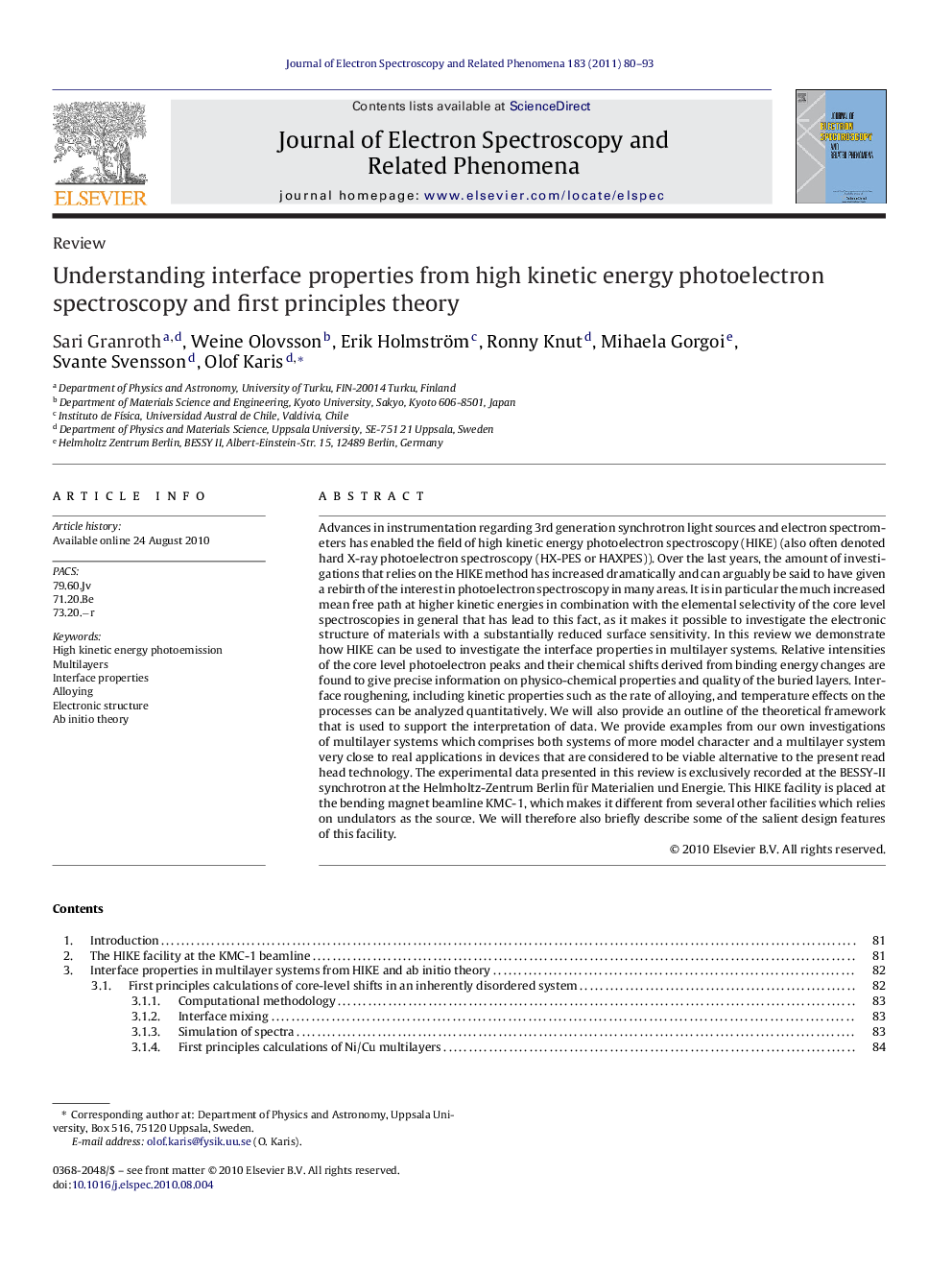| کد مقاله | کد نشریه | سال انتشار | مقاله انگلیسی | نسخه تمام متن |
|---|---|---|---|---|
| 5396376 | 1505753 | 2011 | 14 صفحه PDF | دانلود رایگان |
عنوان انگلیسی مقاله ISI
Understanding interface properties from high kinetic energy photoelectron spectroscopy and first principles theory
دانلود مقاله + سفارش ترجمه
دانلود مقاله ISI انگلیسی
رایگان برای ایرانیان
کلمات کلیدی
موضوعات مرتبط
مهندسی و علوم پایه
شیمی
شیمی تئوریک و عملی
پیش نمایش صفحه اول مقاله

چکیده انگلیسی
Advances in instrumentation regarding 3rd generation synchrotron light sources and electron spectrometers has enabled the field of high kinetic energy photoelectron spectroscopy (HIKE) (also often denoted hard X-ray photoelectron spectroscopy (HX-PES or HAXPES)). Over the last years, the amount of investigations that relies on the HIKE method has increased dramatically and can arguably be said to have given a rebirth of the interest in photoelectron spectroscopy in many areas. It is in particular the much increased mean free path at higher kinetic energies in combination with the elemental selectivity of the core level spectroscopies in general that has lead to this fact, as it makes it possible to investigate the electronic structure of materials with a substantially reduced surface sensitivity. In this review we demonstrate how HIKE can be used to investigate the interface properties in multilayer systems. Relative intensities of the core level photoelectron peaks and their chemical shifts derived from binding energy changes are found to give precise information on physico-chemical properties and quality of the buried layers. Interface roughening, including kinetic properties such as the rate of alloying, and temperature effects on the processes can be analyzed quantitatively. We will also provide an outline of the theoretical framework that is used to support the interpretation of data. We provide examples from our own investigations of multilayer systems which comprises both systems of more model character and a multilayer system very close to real applications in devices that are considered to be viable alternative to the present read head technology. The experimental data presented in this review is exclusively recorded at the BESSY-II synchrotron at the Helmholtz-Zentrum Berlin für Materialien und Energie. This HIKE facility is placed at the bending magnet beamline KMC-1, which makes it different from several other facilities which relies on undulators as the source. We will therefore also briefly describe some of the salient design features of this facility.
ناشر
Database: Elsevier - ScienceDirect (ساینس دایرکت)
Journal: Journal of Electron Spectroscopy and Related Phenomena - Volume 183, Issues 1â3, January 2011, Pages 80-93
Journal: Journal of Electron Spectroscopy and Related Phenomena - Volume 183, Issues 1â3, January 2011, Pages 80-93
نویسندگان
Sari Granroth, Weine Olovsson, Erik Holmström, Ronny Knut, Mihaela Gorgoi, Svante Svensson, Olof Karis,